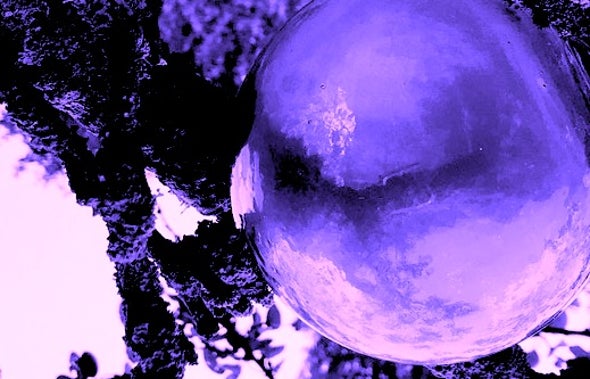Tardigrades Were Already on the Moon
It may not be smart to add more, but nature probably beat us to it anyway
- By Caleb A. Scharf on August 8, 2019

Credit: C. Scharf 2019
The last few days a number of headlines have pointed to a previously obscure fact about a recent attempt at placing a lander on the Moon by the non-profit Israeli SpaceIL organization. That mission, which unfortunately failed to softly deposit a lander called Beresheet on the lunar surface on April 11th 2019, seems to have been carrying a set of thousands of dehydrated tardigrades as passengers.
In fact, when Beresheet crashed onto the Moon it was carrying a novel repository of human history and information, along with a bunch of human DNA samples (in the form of hair follicles and blood) and the tardigrades. You can read more about the interesting motivations for this complement of terrestrial material, a product of the Arch Mission Foundation based out of Los Angeles, elsewhere.
Now though, the spectre of ‘deliberate’ biocontamination of the Moon is getting some scrutiny. Tardigrades, the tiny 'water-bears', are extraordinarily resilient lifeforms. For a field like astrobiology, looking for life beyond the Earth, one of the biggest challenges in our solar system is to avoid creating false-positives by allowing terrestrial biomarkers or actual organisms into alien environments, whether the Moon, Mars or elsewhere. There is also a sensible consensus that we don’t want to mess up any alien ecosystems – especially if they might be delicate and vulnerable to invasive life.
Since the dawn of the space age there have been internationally vetted protocols and broad agreements about this kind of planetary protection. But it is a tricky business. We know that our efforts to sterilize spacecraft are imperfect, and we know that human spacefarers are an enormous potential cross-contamination problem. On the Moon there are already about 100 baggies of, well, astronaut poop, from the Apollo landings. And if the far-flung ambitions of SpaceX are ever realized we will see hundreds, perhaps thousands, of microbe-oozing humans deposited on the surface of Mars.
None of this appears helpful when seen through the lens of astrobiology’s search for other life. But at the same time, we know that nature has been busy cross-contaminating worlds for the past 4 billion years. And hardy little critters like tardigrades have likely already been deposited far beyond the Earth.
The mechanism involves asteroid impacts and so-called impact ejecta. A large literature exists on both theoretical and experimental work tracking the possibilities. The bottom line is that largish asteroid impacts (i.e. roughly 1-kilometer diameter objects and up) tend to spall (shedding of surface material) stuff from a planet and eject some of it with escape velocity or higher. Furthermore, it appears that microbial life and tough organisms like tardigrades have a decent chance of withstanding the pressure and temperature extremes during these shockingly violent launches.
Big impacts can send billions of cm-scale chunks from the surface of the Earth out across the solar system. Some of those pieces may take thousands of years to drop onto other planetary bodies, wending their way through an unseen web of orbital pathways, but they will get there. Indeed, computer modeling of impact ejecta suggest that even far flung places like Titan around Saturn should – albeit rarely – be recipients of pieces of Earth over time. Places like Mars, or the Moon, get far more detritus.
From the point of view of seeking clues to the deep history of life on Earth, this kind of lithopanspermia is fascinating. It may well be that scattered across the surface of the Moon are fossil-like samples taken sporadically throughout life’s terrestrial history. It is also possible that there are samples, even if millions of years old, that contain naturally dehydrated animals like the tardigrade. It is also, of course, possible (albeit with an unknown probability) that there is a happy ecosystem on Mars populated by descendants of terrestrial life.
There have also been many debates about whether life on Earth got its origins elsewhere before being transported here by impact ejecta. We’re probably a long way from knowing the answer to that. But it is conceivable that any life in our solar system has spent the past few billion years in a merry game of natural cross-contamination; mixing it up on a regular basis.
Does any of this mean it’s a good idea to be incautious about flinging terrestrial biology onto places like the Moon? No, we should step very carefully. But like all things, there has to be a balance between big ideas, exploration, science, and a sense of cosmic ethics.
The views expressed are those of the author(s) and are not necessarily those of Scientific American.
ABOUT THE AUTHOR(S)

Caleb A. Scharf
Caleb A. Scharf is director of astrobiology at Columbia University. He is author and co-author of more than 100 scientific research articles in astronomy and astrophysics. His work has been featured in publications such as New Scientist, Scientific American, Science News, Cosmos Magazine, Physics Today and National Geographic.
Above is from: https://blogs.scientificamerican.com/life-unbounded/tardigrades-were-already-on-the-moon/
No comments:
Post a Comment